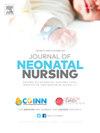胎龄与新生儿高胆红素血症发病率之间的关系
Q2 Nursing
引用次数: 0
摘要
新生儿高胆红素血症的发病率是全世界关注的一个重要问题,它对发病率和死亡率具有潜在影响。本研究旨在探讨胎龄与新生儿高胆红素血症发生率之间的相关性。研究从 2022 年 10 月至 2024 年 3 月期间在布勒伦地区医院新生儿重症监护室收集了二手数据。研究采用横断面观察分析设计。皮尔逊相关分析检验了胆红素水平与胎龄之间的关系。结果显示,新生儿胆红素水平与胎龄呈负线性相关,表明早产新生儿胆红素水平升高的风险较高。研究中的大多数新生儿为早产儿(72.3%),98.3%的新生儿出现高胆红素血症。这项研究为了解胎龄与新生儿高胆红素血症之间的关系提供了宝贵的见解,尤其是在资源有限的环境中。早期识别高危新生儿并采取适当的干预措施,对于预防与高胆红素血症相关的并发症至关重要。本文章由计算机程序翻译,如有差异,请以英文原文为准。
Correlation between gestational age and incidence of hyperbilirubinemia in neonates
The incidence of hyperbilirubinemia in neonates is a significant concern worldwide, with potential implications for morbidity and mortality. This study aims to investigate the correlation between gestational age and the occurrence of hyperbilirubinemia in neonates. Secondary data were collected from the Neonatal Intensive Care Unit of Buleleng Regional Hospital from October 2022 to March 2024. The study employed an observational-analytical design with a cross-sectional approach. Pearson correlation analysis examined the relationship between bilirubin levels and gestational age. The results revealed a negative linear correlation between neonatal bilirubin levels and gestational age, indicating a higher risk of elevated bilirubin levels in preterm neonates. The majority of neonates included in the study were preterm (72.3%), with 98.3% experiencing hyperbilirubinemia. This study contributes valuable insights into the relationship between gestational age and hyperbilirubinemia in neonates, particularly in resource-limited settings. Early identification of at-risk neonates and appropriate interventions are crucial for preventing complications associated with hyperbilirubinemia.
求助全文
通过发布文献求助,成功后即可免费获取论文全文。
去求助
来源期刊

Journal of Neonatal Nursing
Nursing-Pediatrics
CiteScore
2.00
自引率
0.00%
发文量
143
期刊介绍:
Aims & Scope: This is the practical, bimonthly, research-based journal for all professionals concerned with the care of neonates and their families, both in hospital and the community. It aims to support the development of the essential practice, management, education and health promotion skills required by these professionals. The JNN will provide a forum for the exchange of ideas and information between the range of professionals working in this field; promote cooperation between these professionals; facilitate partnership care with families; provide information and informed opinion; promote innovation and change in the care of neonates and their families; and provide an education resource for this important rapidly developing field.
 求助内容:
求助内容: 应助结果提醒方式:
应助结果提醒方式:


